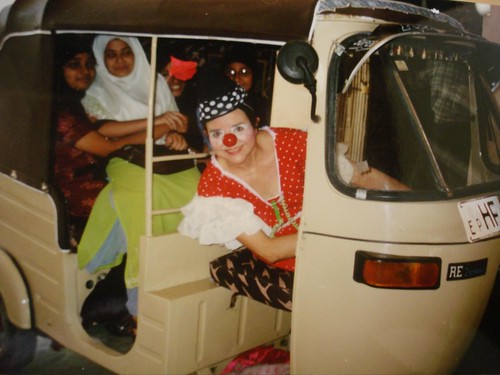
(click para ver relato completo)http://www.mediafire.com/view/?l7reqipnlt5ajt4
Foto: Mujer de mil polleras
Cortesía de Beatrice Velarde (http://www.beatricevelarde.com/)
 Marta Sanchez, Clown without borders
Marta Sanchez, Clown without borders


Dear Kathrin, I really wanted to tell you how much I enjoyed your story. I am reading such wonderful texts, yours included, and finding it exciting and fun. It’s incredible how I can step into the life of a person that I don’t know and read things that are so intimate and so true, and it is impossible not to have an image in my head of the writer. In short, I’m going to work extra hard so that this book is published soon, so that other people can read about the amazing things that are happening to us women. Hopefully, our stories motivate other women to travel, or at least to see that it is a possibility, or to just simply open themselves up to experience the poetry of travel.
Finally, the option of creating a blog occurred to me in January, 2007. The blog is being created as a space for the collection of experiences and discussions about (voluntary) displacement. A good way to read travel narratives may be to look for the tension of the person in motion, the tension that arises between the text and the location being visited, and the people and the ideas that are encountered along the way. This tension is not only present in travel stories. The tension is due to unresolved, and unresolveable, conflict. This tension creates a form of intellectual stimulation and stories of displacement are only one of several different ways to create tension. These stories are not about a lack of belonging, but rather of multiple belonging and multiple instances of not belonging. The feeling of being (and not being) part of everything. The proposal is to construct new ways to be and to feel. Where everywhere is home, but is also hell.